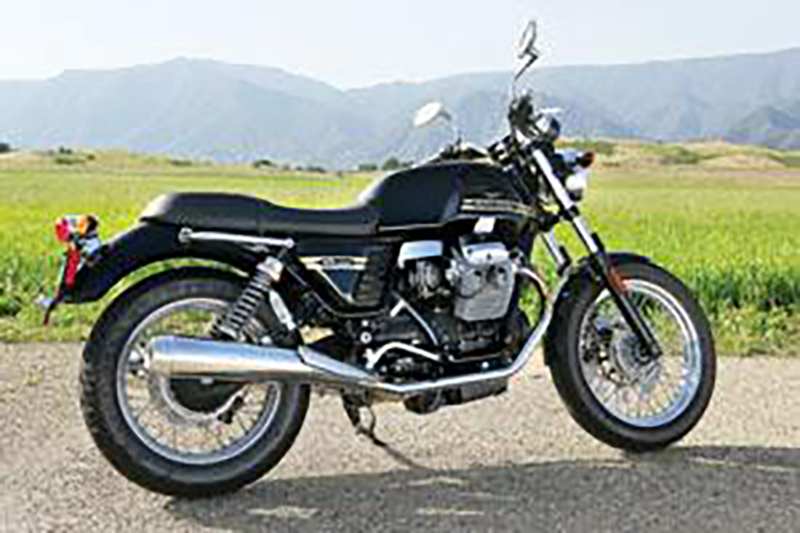2010 Moto Guzzi V7 Classic

Road Test Review
Moto Guzzi has many notable styling achievements on its résumé. Recently, for example, there’s the exotic Griso cruiser, and radical MGS-01 racebike. In this author’s humble opinion, though, few of its efforts top the original 1967 V7 and subsequent V7 Sport. These machines had a simple but elegant style that relied mostly upon subtle curves in the fuel tank, side covers and seat, which makes the beauty of these two V-twins all the more remarkable. At some level Moto Guzzi must share that opinion today, because it has two newer bikes in the current lineup modeled after those V7s from four decades ago.
A few issues ago we put the V7 “Cafe” Classic version to the test, with its flat green paint to mimic the original V7 Sport. Here we have the standard Moto Guzzi V7 Classic, which swaps the Cafe’s lower clip-on bars, solo-styled seat and upswept exhausts for a more conventional upright tubular handlebar, dual seat and straighter mufflers, all better for longer distances, luggage and two-up riding. Spoked wheels and simple color choices of black with gold trim or white with black-and-red trim hold down cost, yet there’s plenty of chrome, and none of the retro style is lost in the translation from sport to standard. Nor is any of the performance, as both bikes are identical in every other way.
A light wet weight of 447 pounds substitutes for massive power from Guzzi’s air-cooled, 744cc OHV V-twin, which revs cleanly and smoothly thanks to EFI and 90 degrees between the cylinders giving it perfect primary balance. Ample torque helps a solo rider squirt from corner-to-corner without needing to shift the smooth five-speed much. While touring two-up is a mostly leisurely undertaking because of the moderate output, except for a plank of a seat it is rider- and highway friendly up to about 85 mph, and solo at 210 pounds the only time I wished for more power was strafing canyons uphill. Heading back down the bike is transformed into a plenty powerful naked sportbike. Its clean, low-maintenance shaft final drive doesn’t seem to ruffle the rear suspension—I had all but forgotten the shaft is even there, in fact—and in this environment the stiff suspension works well in a basic kind of way.
Elsewhere excess compression damping in the 40mm conventional fork and twin rear shocks gives the V7 a harsh ride, and fiddling with the preload and rebound damping adjustments in back does little to alleviate it. At $8,790, however, the ride is tolerable. As the rear brake is just adequate, the single Brembo two-piston caliper in front assumes most of the stopping duties and does so well, though a tad more bite would be nice. The most rewarding and inexpensive change would probably be tires. The bike steers effortlessly, and the stock Metzeler Lasertecs—a 100/90-18H and 130/80-17H—grip well, but the front has a tread design from the ’80s that hates rain grooves and pavement cracks.
A lovely tach and speedo reminiscent of the original Veglia-Borlettis from the ’70s nicely top-off the front end style, and include digital LCD displays with tripmeter, time and ambient temperature. Our test bike’s single-wall stainless exhaust headers blued-up a bit and ticked loudly cooling at idle and stopped, but the cigar-shaped Lafranconi mufflers are rewardingly throaty and their lower position makes room for soft side bags. Cornering clearance is still generous, too. There’s a bit of room under the locking seat for the stock toolkit, but the factory definitely needs to figure out a better place for the three large U.S. compliance stickers than on the pretty gas tank. When the sculptor finished his famous nude of Aphrodite did he put three stickers on her? I think not. Though these are large enough….
